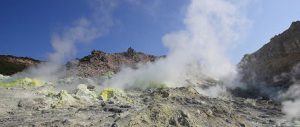Against a backdrop of rising carbon–dioxide emissions and increasing evidence that the world may have passed temperature “tipping points” that could accelerate climate change, some scientists have turned their attention away from traditional strategies for greenhouse-gas mitigation and climate-change adaptation, and begun to explore ways to deliberately change the planet’s temperature.
Some of these “geoengineers” hope to reduce the greenhouse effect by taking planet-warming gases out of the atmosphere, and some aim to cool the earth by reducing the absorption of solar radiation. The proposals themselves range from the relatively simple – increasing the amount of carbon-dioxide absorbed by the ocean, for example – to ideas that seem to come straight out of science fiction, such as placing trillions of reflective mirrors in space, or building millions of artificial trees to “scrub” greenhouse gases from the atmosphere.
Yet as crazy as they might sound, some of these ideas are being taken seriously at the highest levels. In the United States, president Barack Obama’s chief scientific advisor, John Holdren, has controversially suggested at least considering geo-engineering as an option. And although few regard geoengineering as an alternative to reducing emissions, an increasing number of scientists – including Tim Lenton, from the University of East Anglia, and Wallace Broecker, at Columbia University in New York, have suggested exploring the potential of employing such proposals if climate change began to occur faster than previously anticipated. In other words, some are starting to see geoengineering as a response system for a climate-change emergency.
But are these projects just costly distractions from the real challenge of de-carbonising our lifestyles and our economies, as many critics claim? Is geoengineering “playing God”? Could it make a bad situation worse? Some fear that such schemes would have their own, unpredictable environmental consequences, and that a “rogue actor” might cause unintentional destruction by using geoengineering. Consequently, there have been calls for if not an outright ban, then the establishment of international guidelines on the use of such schemes.
So, how are these different geoengineering schemes supposed to work? How much would they cost? How long would they take? Are they all unrealistic, science fiction proposals, or could we see some of the projects feasibly implemented? chinadialogue will examine some of the major geoengineering proposals over the coming weeks, looking the economic, environmental, political and moral arguments around this controversial scientific topic.
NEXT: using sulphur to engineer the climate
Homepage image by nanotechi

